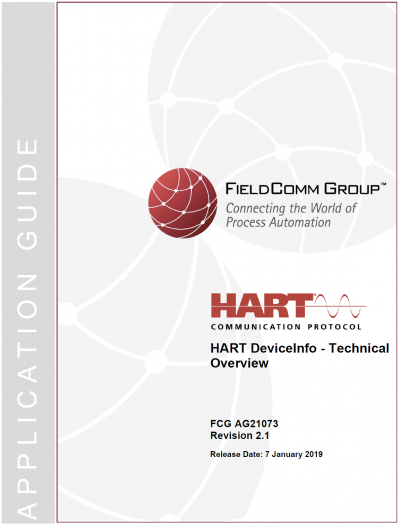DeviceInfo
The HART mantra is: simple, easy-to-use, reliable, and high-value. HART communication is relatively simple for Host Applications. The essential runtime and status data commands are well defined and universally supported in the devices. The field devices are installed and the data is there ready to be consumed by the Host Application. However, HART communication is binary and, for some, comprehending and consuming binary data can be a barrier to its use. For example, unit codes are returned with all HART process values. However, that code is a number and the text associated with the code (ºC, kg, mA, etc.) would need to be known to the host (all unit codes and their symbols (strings) are specified in the Common Tables Specification).
Utilizing the HART data can be simplified by providing semantics for the binary data and doing so will facilitate broader application development. Providing semantics and templates for HART field devices is the core objective of DeviceInfo technology. DeviceInfo technology makes it easier to utilize the Runtime Data and Status found in the 40-million+ HART field devices.
DeviceInfo extracts metadata from the field device's EDD encoded file based on Expanded Device Type and Device Revision. The extracted metadata focuses on runtime and status data and is a tiny portion of the EDD's complete set of Field Device metadata. Consequently, the resulting DeviceInfo files require a small amount of space and host processing power. The core files are output in both JSON and XML formats. NodeSet files are XML. Host Application developers can use whichever of these formats best suit their experience; tooling and development strategy.
